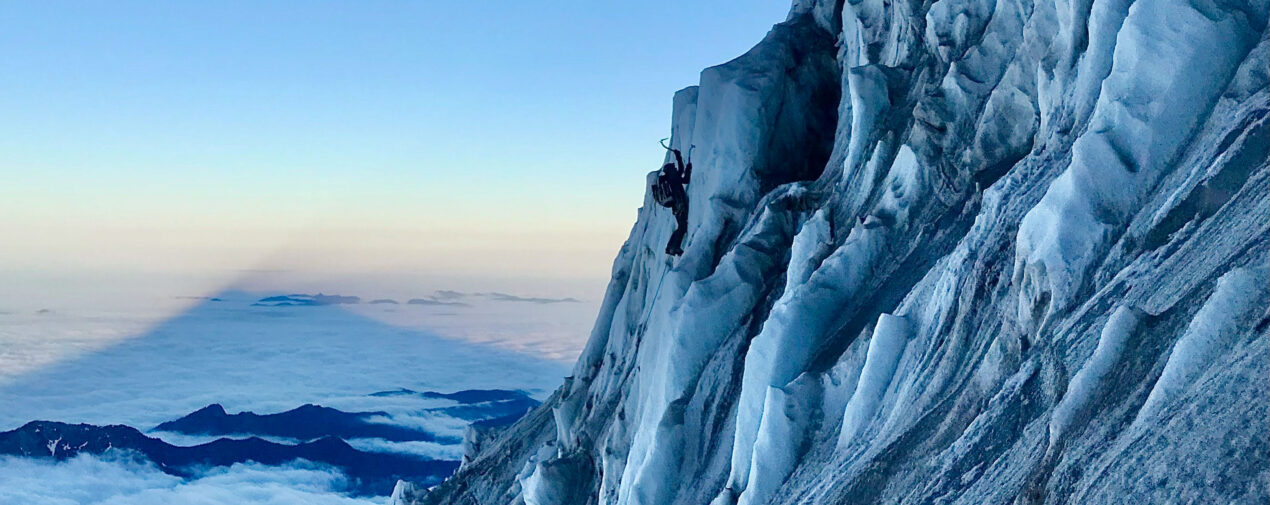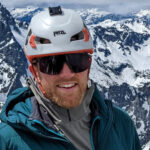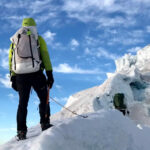Lessons Learned the Hard Way as a Mountain Guide
I started guiding on Mount Rainier when I was 19 years old. At the time, I had completed a short list of climbs and ski descents in Washington’s Cascade Mountains. However, like many teenagers in the mountains, I was wildly inexperienced. When I first showed up to new guide training, I was eager to learn from a variety of mentors with vast depths of experiences. I thought that I would learn how to move faster and climb harder in the mountains.
I could not have been more wrong.
Every day since then, I have learned new things about climbing, mountains, and people – including myself. I hope to share a few things I’ve learned in the past six years as a full-time mountain guide and some of the embarrassing ways I’ve learned these tidbits.
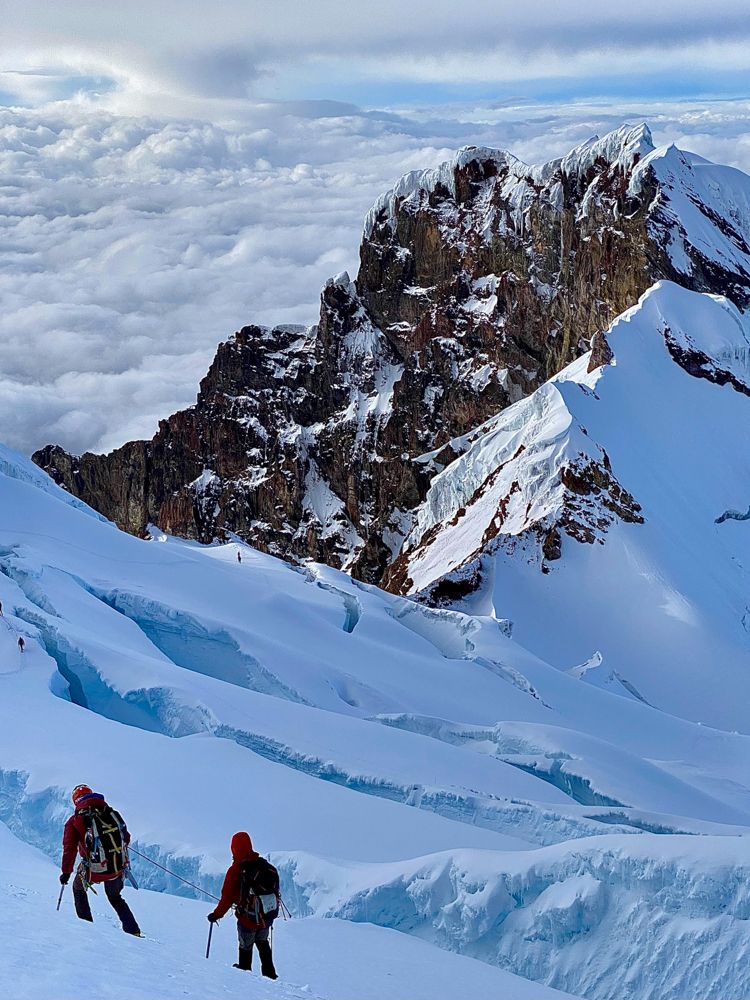
Light Isn’t Always Right
Take it from me, shaving weight from your pack by ditching items like hardshells or insulating layers is never worth it! This is especially true in the drippy North Cascades. Following one too many wet experiences up near the Canadian Border, I now always bring hard shells, puffy layers, and a tent that can withstand some wind and rain.
Guides Cannot Bail if There Is Rain in the Forecast
Guiding differs in may ways from “normal” climbing that others engage in recreationally. When I am guiding, I do not get to plan my trip around a weather window and bail if the route or weather conditions are unfavorable. No matter what the forecast says or what I’ve heard about the route, we are going to climb up there and see for ourselves. The upside is that we get to see some gnarly weather and gain experience dealing with it! The downside is that we have quite a few soggy trips and occasionally have to climb a route that we think will not be passable to the summit.
Spending Many Days in the Mountains
One thing I did not realize as an inexperienced 19 year old who was new to guiding was just how different climbing mountains is when it’s your job. I think the driving factor here is that when I was a college student and climber, I spent – at most – just a weekend per week climbing. Once I began guiding, this number jumped to somewhere around 4 to 6 days per week all summer. Once I began spending that much time in the mountains, I began to prioritize comfort and good food. At this point, I spend far more time climbing and guiding than I do at home so how I live while guiding is no longer the anomaly, but the norm. Things like salads and brushing and flossing are far more important to me while guiding than it is to many others while climbing.

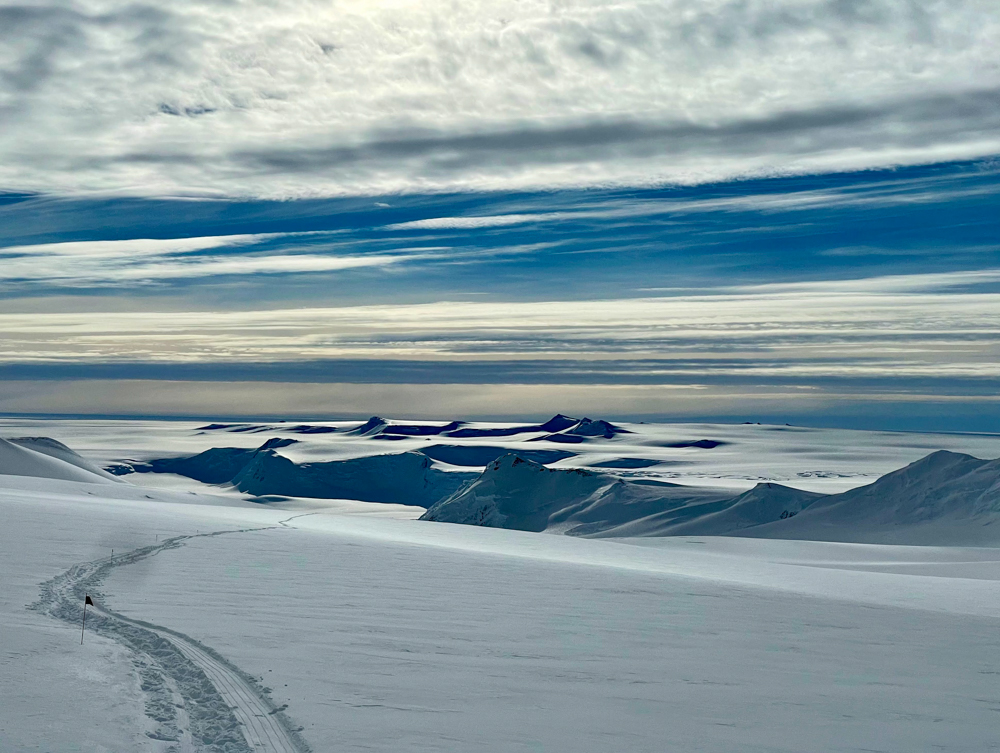
Download Distractions on the Phone
Having been trapped in my tent in storms for up to a week at a time, I have found that SitComs are ideal to download prior to your trip! Nothing improves quality of life in the tent like binging The Office with your friends while the storm rages outside. This is also a great way to wind down at the end of a long day and relax before falling asleep. Be sure to keep the content light and funny to ward off the bad dreams!
Stay Fresh and Clean
I think people get a bit wrapped up in the idea of cleanliness and what it really means. When climbing Denali or in the Himalaya, you are doomed to spend several weeks between showers. Two things can help a bit with this. First, accept that you might not smell normal. Second, a few wet wipes can do a lot to improve your hygiene when you feel a bit gross and a shower is still in the distant future!
Bring the Fried Chicken and Pizza
Nothing beats yummy food in the mountains. This one is simple, bring food that you are excited to eat! For me, that’s fried chicken, bagged salads, and lots of chocolate. I tend to avoid overly processed foods like granola bars and energy chews. A few of these might make sense on summit day but it’s generally good to keep these items to a minimum as they are less appetizing and tend to cause stomach issues.
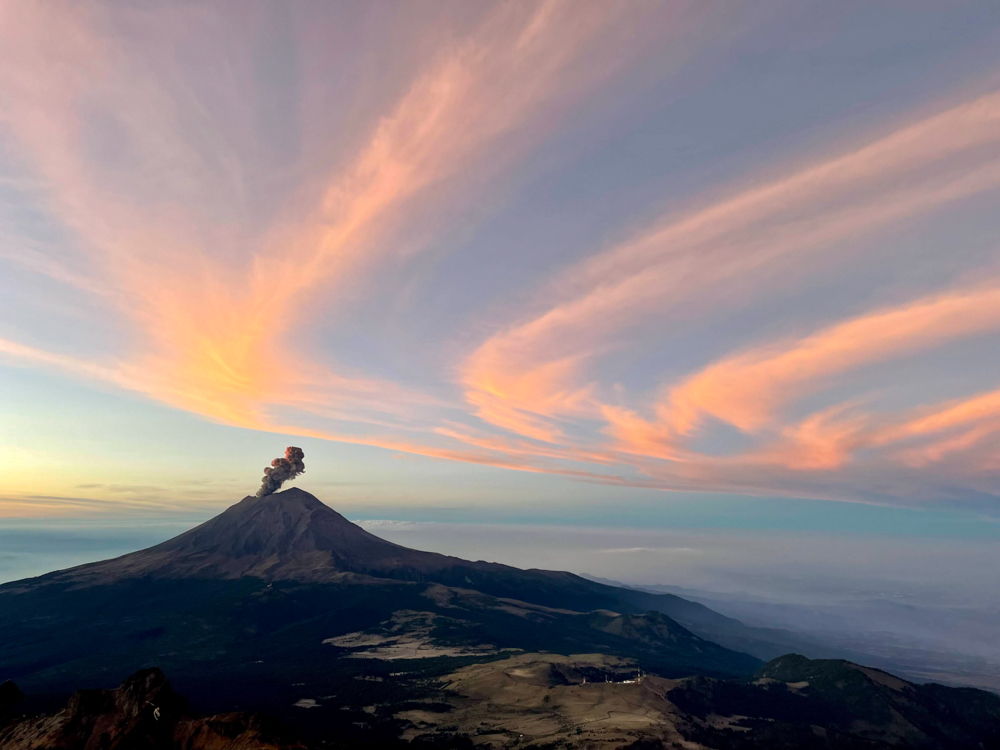
Just Be Honest
As a guide, I frequently find myself in a situation where I have received bad news about upcoming weather or route conditions that I am nervous to share with my team. I have found that hiding this information or dumbing it down will cause issues. Instead, I now relay exactly what information I have to the group in nearly real time. People are smart and know when something is going on. Honesty is the best policy and leads to trust!
Finding Your Guide Voice
Unfortunately, sometimes the honesty isn’t enough and disagreements arise high on the mountain. While against my nature, I have been forced to use an assertive voice to help me take control of a tense situation. With practice, mentorship, and support, I have found that breaking out the “guide voice” every once in a while is necessary when conflict arises at an inopportune time. Fortunately, I have only had to go this route a handful of times throughout the years!
Listen to Your Fellow Guides
After watching the lead guides that I felt the most confident working with as a young guide, I have tried to mold their guiding style into my own. In most cases, this means fostering an environment where every voice is heard and valued. On Mt Rainier, this means that every guide has a say in big decisions as well as veto power if they are worried about a hazard on the climb. Guides who have a voice are confident guides!
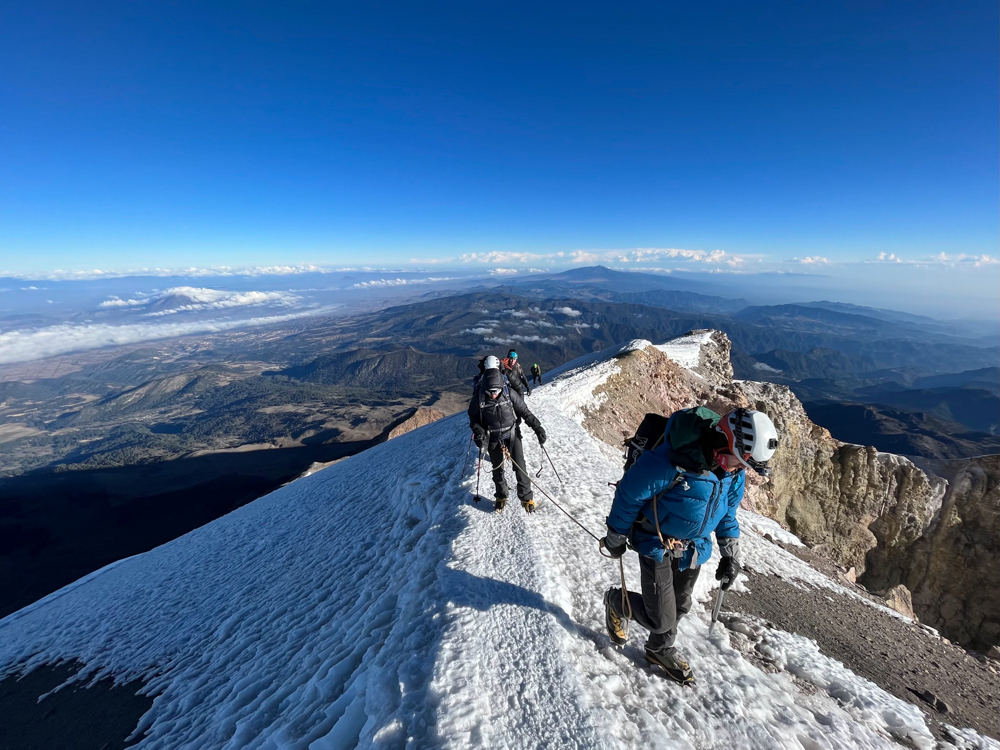
The Final Word
I have learned a lot over the years while working in the mountains and almost none of the important lessons have been about climbing harder or moving faster. Rather, I have learned to move slowly, enjoy the people I am with, and generally be more comfortable in a wide variety of places and environments. One of the things I love most about guiding is the ability to spend most of my time outside, in the mountains, learning more about myself and the people around me. Hopefully these little tips and tricks help take your mind off of the minutiae so you can spend more time enjoying your days in the hills.
About the Gear Tester
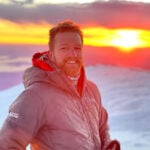
Porter McMichael
Porter McMichael is a full time mountain guide. He leads trips in the cascade mountains of Washington as well as trips to the Himalaya, Denali, and Latin America. When he is not working he enjoys ice climbing, ski mountaineering, trail running, and knife making.

